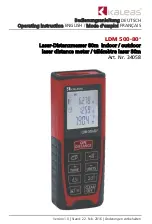
1
ES520 MIDI Settings Manual
MIDI Settings
MIDI Overview
The term MIDI is an acronym for Musical Instrument Digital Interface, an international standard for connecting
musical instruments, computers, and other devices to allow the exchange of performance data.
* “MIDI” is a registered trademark of the Association of Manufacturers of Electronic Instruments (AMEI).
MIDI Terminals
The MIDI has two types of terminals: MIDI IN and MIDI OUT. These terminals must be connected via dedicated cables.
MIDI terminal
Function
MIDI IN
Receiving note, program change, and other data.
MIDI OUT
Sending note, program change, and other data.
MIDI channels
MIDI uses channels to exchange data back and forth between MIDI devices. There are receive (MIDI IN) and transmit (MIDI OUT)
channels. Most musical instruments or devices with MIDI functions are equipped with both MIDI IN and OUT jacks and are capable of
transmitting and receiving data via MIDI. The receive channels are used to receive data
from
another MIDI device, and the transmit
channels are used to transmit data
to
another MIDI device.
The illustration below shows three musical instruments, connected together using MIDI.
Transmitting instrument
a
Receiving instrument
b
Receiving instrument
c
Transmitting instrument
a
sends transmit channel and keyboard information to receiving instruments
b
/
c
.
The information arrives at the receiving instruments
b
/
c
.
Receiving instruments
b
/
c
will respond to MIDI data that is sent if their receive channel is the same as the transmit channel of the
transmitting instrument
a
. If the channels do not match, the receiving instruments
b
/
c
will not respond to any data that is sent.
For both receiving and transmitting, channels 1~16 can be used.
Recording/playing with a sequencer
When connected to a sequencer (or a computer running MIDI
sequencing software), the ES520 digital piano can be used to
record and playback multi-track songs, with separate sounds
playing simultaneously on each channel.
Sequencer



























